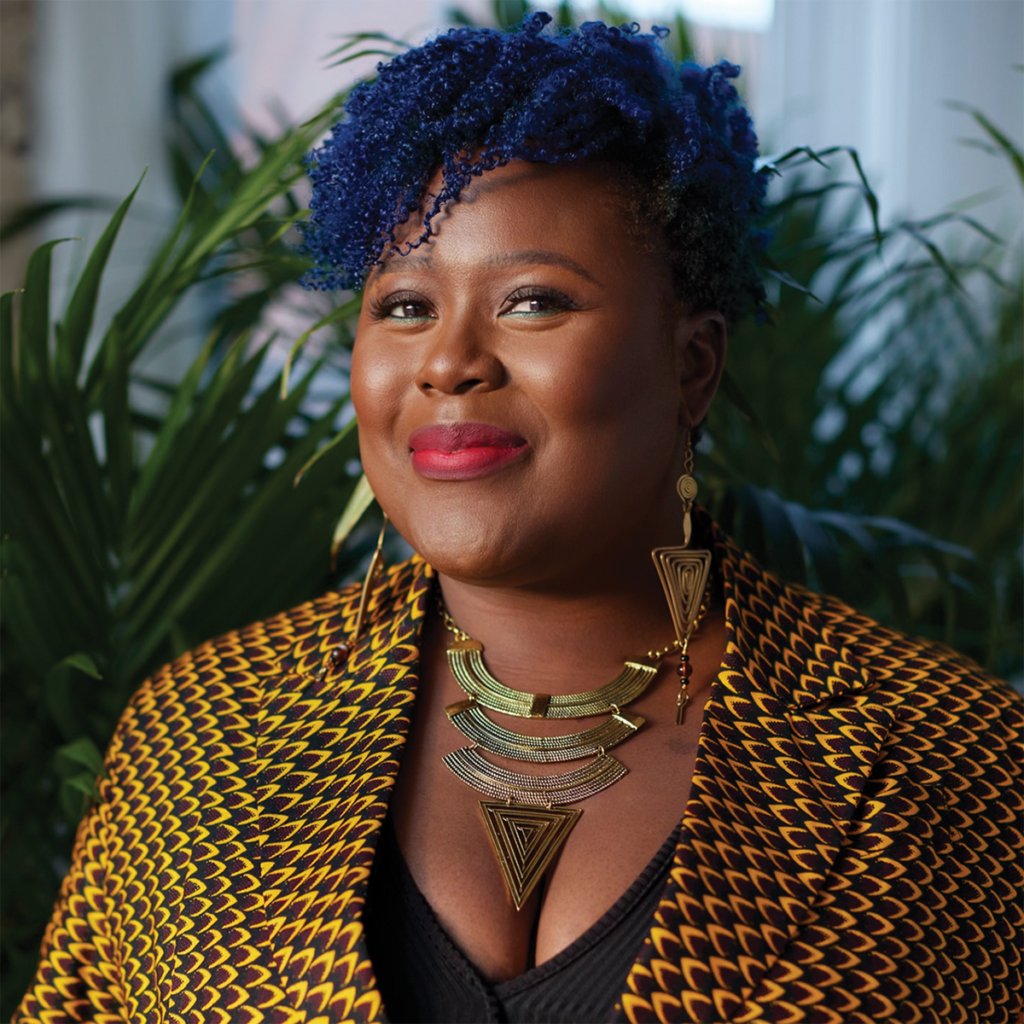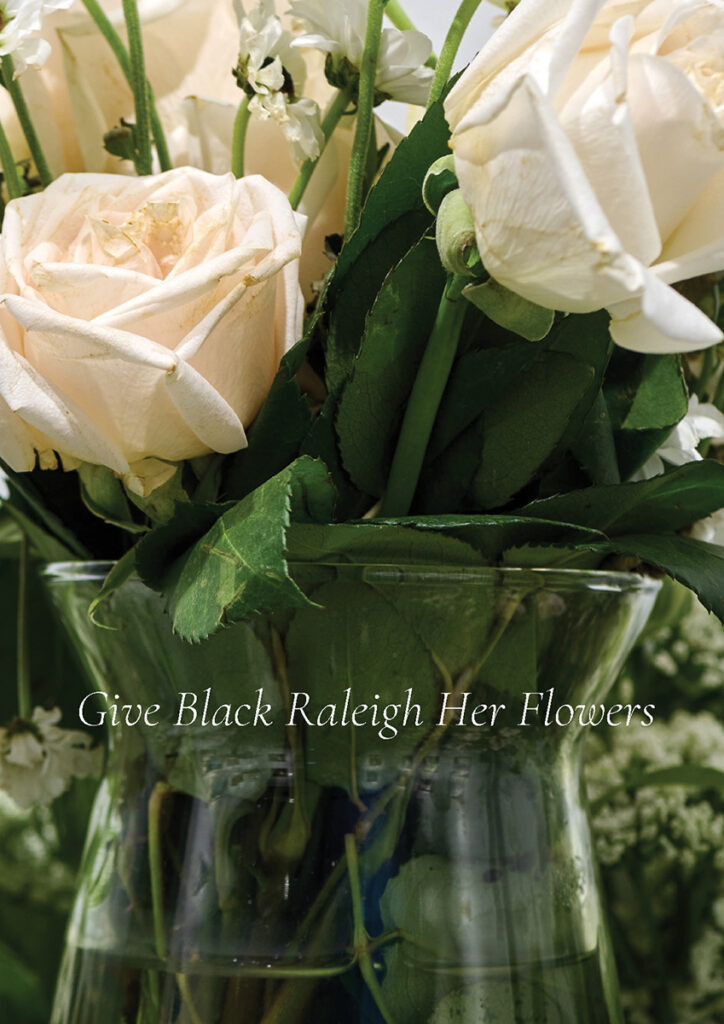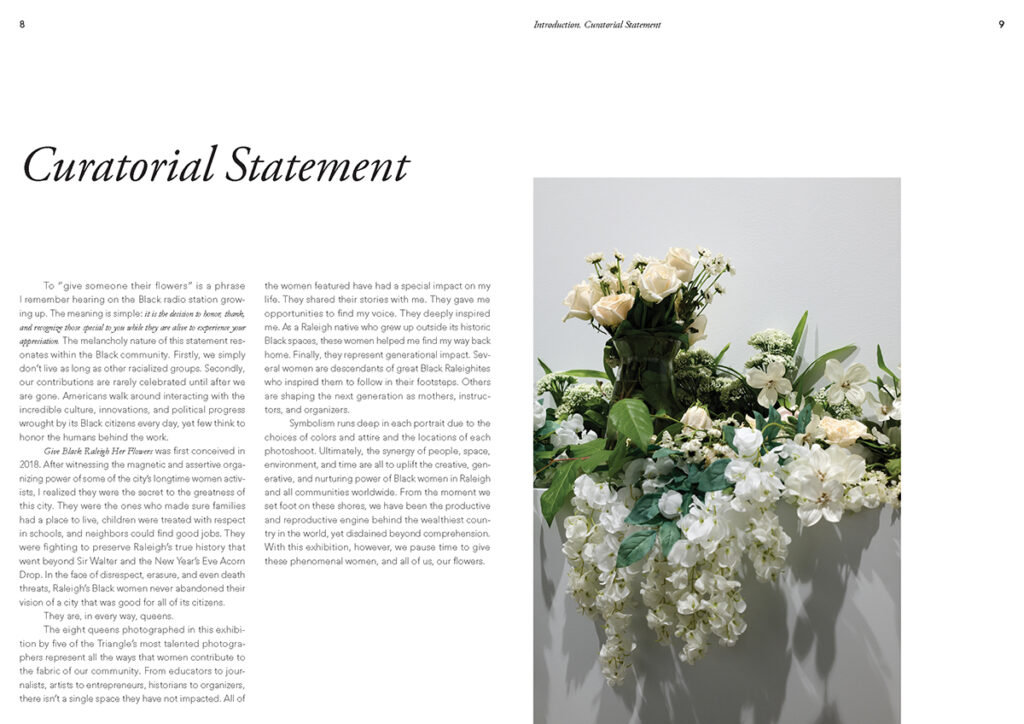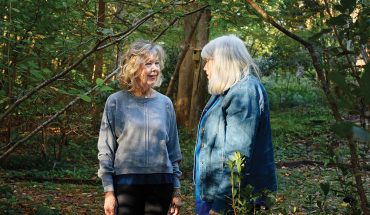A Q&A with the author of the new book, Give Raleigh Her Flowers, which is based off of a 2021 exhibition at Anchorlight Studio.
As told to Ayn-Monique Klahre

Last month, Courtney Napier published Give Black Raleigh Her Flowers, a visual and story- filled celebration of 10 women making history in our area. The 90-page book was born out of an exhibit of the same name, which ran at Anchorlight Studio last year. Napier, the founder of Black Oak Society, a collective for Black creatives, and the editor-in-chief of BOS Magazine, started working on this multiplatform project in 2021. We asked Napier about how it came to be, and why the book is important to Raleigh now.
How did this get started?
In 2021, I was planning to put together an issue about significant Black women in Raleigh’s history. It ended up being called An Ode to Raleigh’s Black Mothers — a celebration of the matriarch and the feminine influence on all our lives. There was always going to be an artistic element to lift the writing off the page, and I wanted a community event to support the issue. So I got in touch with a friend and colleague, Mike Williams of the Black on Black Project. It took a year of planning to get the Give Black Raleigh Her Flowers exhibit going. But the delay ended up being good, because by the time it opened, the atmosphere felt safe.
What was the idea for the event?
I wanted to create a royal portrait hall of living Black matriarchs, these Queens, who have had an impact on my life personally and Raleigh collectively. These were people who I’d worked with already, or written about, or cultivated relationships with. But more importantly, they were women who’ve had a bigger impact on Raleigh than what they’ve gotten credit for. I wanted to create an opportunity for their stories to shine,to truly venerate them, and give them a place for people to learn about them and offer their gratitude.
How did you portray that?
We chose to do a photography exhibit, because I wanted these women to be involved and have a chance to build a relationship with the photographer. I worked with our BOS magazine creative director, Aerial Sanders, who is also a stylist for plays, music videos and films. She chose a gold-and-white palette influenced by African religions and African American culture. For example, in Black churches, the church mothers often wear white. And in African religious traditions, the women who are spiritual leaders wear white. The gold is a symbol of prosperity and authority.
What ended up being included?
We worked with five photographers who did eight portraits of 10 women, from their 30s to late 70s. We printed the images and hung them in gold frames on the wall, with their stories next to them. The text weaves the lives and accomplishments of each woman together with the portraits — how different details, like the location or style or special items in each portrait point to specific characteristics of the Queens and their impact on Raleigh.
The exhibit ran at Anchorlight for two months, in May and June of 2022. We opened with a private reception for the women we’d photographed to share the final images with them in a safe space. It was really powerful; some peo- ple were shouting, others were silently weeping. The next night we opened it to the public. We also had artist talks during the exhibition, often the photographers sitting down with their subjects. We had the most incredible conversations. Even the photographers said they learned so much about Raleigh history from working with these women.
What happened afterwards?
It had such a great reaction that Shaw University asked to host the show fromOctober to December. Then it was time to work on the exhibition catalog. Mike, along with Shelley Smith, the creative director of Anchorlight, was insistent that my writing become part of this whole experience. And I wanted to continue the education, to highlight these women in a way that people could bring them into their homes.
As I was writing, I kept finding more information to add! Soon the exhibition catalog became a book, a whole project of its own. The book includes all of the portraits included in the exhibition, as well as never-before-seen portraits of the Queens. Each Queen has a biography that is tied together with the art, as well as reflections from the artists on the process.
Also, I included the official exhibition im- ages by the talented photographer Sally Van Gorder as well as behind-the-scenes photos and pictures from our incredible opening taken by the wonderful Shelley. I included an article that Colony Little wrote about the exhibit for WALTER, as well as notes to explain significant details about the art and artists.
The book ties together their histories and current realities — many of these women are still doing the work that they are being recognized for. Raleigh is growing so quickly, and its Black history is getting obscured. I want to spark people’s curiosity, to help them understand where we came from. But it’s fitting that the book has taken this long to write, because now we’ll be releasing it on the anniversary of the exhibition.
What has been the long-term impact on you?
I am still experiencing people coming to me and telling me how much that exhibit meant to them. These women felt truly seen and honored. I never in my wildest dreams imagined the reach of this exhibit and work. But I did believe in the power and impact of these women. Getting the opportunity to write this book, thanks to Anchorlight’s generosity and the urging of Shelley and Mike, has been a dream come true. These women’s stories are truly remark- able and I’m forever changed by know- ing them.
Give Black Raleigh Her Flowers is available through blackoaksociety.com.
This article originally appeared in the June 2023 issue of WALTER magazine.






